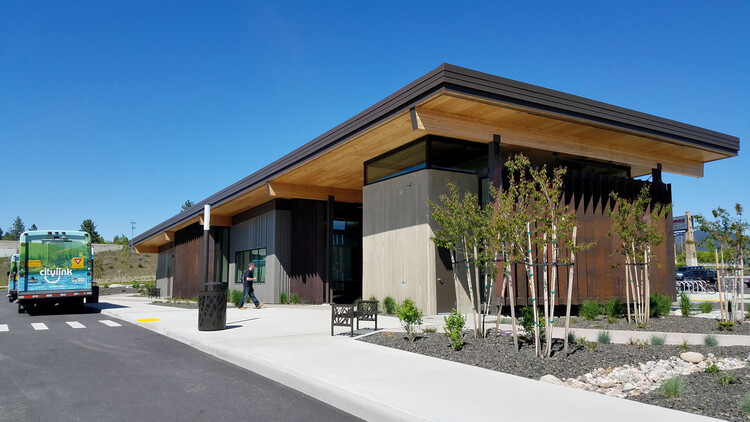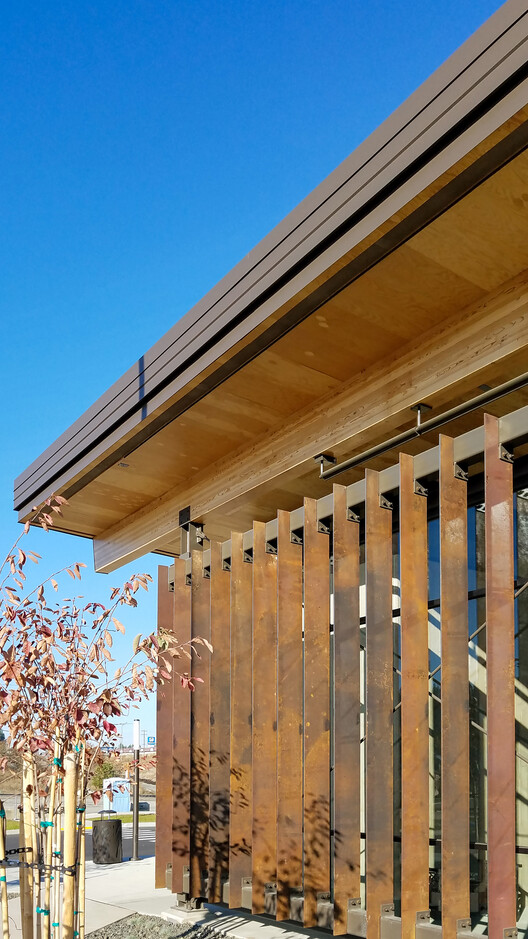Riverstone Transit Center / ALSC Architects
Riverstone Transit Center / ALSC Architects


Text description provided by the architects. The new Riverstone Transit Center brings the administrative staff and bus services for City Link and Paratransit to a central hub location to provide riders with a safe, clean, and convenient experience. The project includes an Administrative Building, outdoor public restrooms, and a covered waiting shelter for riders. The site includes landscaped pathways to each of the eight bus loading areas, as well as 80 parking stalls and additional space for future growth.

Multi-modal Transit Hub Through Time. Centuries ago, this site was encompassed by the heart of the original, vast territory of the Coeur d’Alene Tribe and served as a hub for regional trading and traveling Tribal factions. Today, the Transit Center’s analogous function provides a multi-modal transportation hub with regional reach via the adjacent pedestrian trail, interstate highway, state route, riverway, and county-wide bus transit system.



Rider Equity. In support of the mission to remove barriers that prevent people with disabilities from using the transportation system, the previously used gravel lot in this location was upgraded significantly. Accessible parking, pathways, restrooms, and Paratransit support services all promote rider equity.
Design. Knitting together the threefold program under one roof enables adequate separation, yet essential connectivity. The passenger shelter has a delicate balance of needs; providing refuge from elements and cold southerly winds while encouraging only brief rider stays. The durable concrete restroom masses contribute to the open shelter, receiving daylight from the clerestories above.

Within the Administration Building, the transit operations offices remain separated from daily ridership but enjoy ample views out to monitor activity. Corten steel fins provide solar shading and serve as a mechanism for defensible space. The facility’s unique composition of the material, space, and landscaping instills a sense of ownership in the community and inspires newcomers to utilize the transit system.








